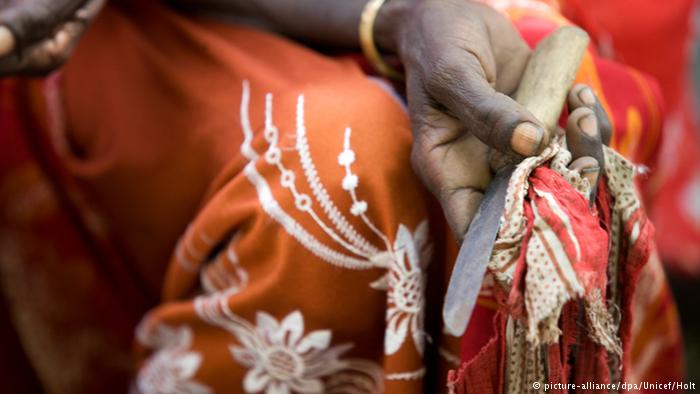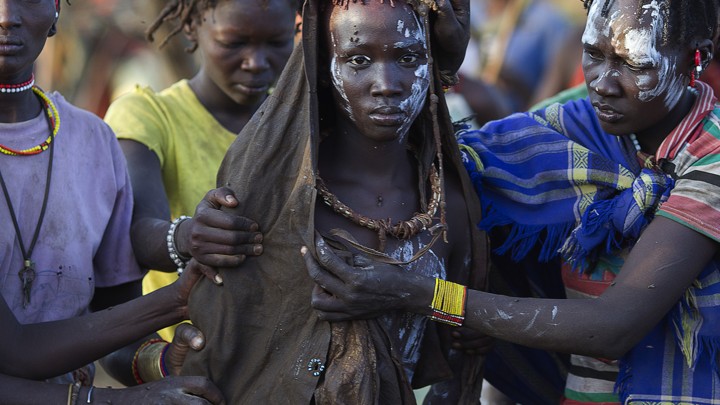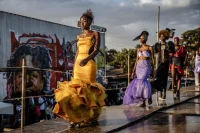[dropcap]F[/dropcap]emale Genital Mutilation (FGM) is widely practised among some East African tribes. It is primarily a cultural, and not a religious, practice although some religions do include FGM as a part of their practices.
This practice is so ingrained in the tribes which believe that it’s necessary for girls to become women. In communities that support FGM, for example, it is a compulsory procedure for every woman and it is one of the very important stages in women’s life. It is regarded as a transition stage for teenage girls into womanhood, grooming and training of cultural values.
According to research by The Legal and Human Rights Centre (LHRC) four years ago, it is estimated that about 18% of Tanzania women are subjected to FGM. Uganda has a low prevalence rate where only 1.4 % of Ugandan women aged 15 to 49 have undergone the cut. Yet FGM remains a rite of passage for girls particularly from the Pokot ethnic group, who largely live along the Kenya-Uganda northern border.
According to the records, FGM in Kenya continues to be carried out predominantly by traditional circumcisers for 74.9% of girls aged 0–14 and 83.3% of women aged 15–49.
Dr Mari Okumura, a medical doctor who is about to complete her doctorate degree in social studies and women affairs in Africa, is from Shizuoka in Japan and has been doing a research study at the University of Khartoum in Sudan. Dr Okumura started her research in Kenya and proceeded to Tanzania where Kurya tribe.
Dr Okumura established a very high prevalence rate of FGM in some parts of Kenya, Tanzania and few cases in Uganda. She revealed that the decision to circumcise is parental and a societal matter, with fathers as the main decision-makers as well as chiefs and leaders.
Elders in these communities are the main hindrance to ending FGM. They attend training on the impacts of FGM but once they walk out, they go back to the practice. They have made FGM a business. They get allowances for meetings and when the ‘surgeons’ carry out FGM they get a share of the proceeds. Circumcision is predominantly done at the homes of the initiates at a rate of 87% while about 3% are done within heath facilities. Traditional circumcisers perform most circumcisions (94%), while another 6% are done by health staff.
In Migori in Kenya, Dr Okumura observed public ceremonies celebrating the season of female genital mutilation (FGM) whereby hundreds of girls belonging to the Kuria tribe undergo FGM. Groups of men, some armed, move door-to-door harassing the families of uncircumcised girls.
The girls are paraded openly in the streets, wearing the celebration hats as a sign, as the community members sing and dance on public roads in celebration. “I counted more than 300 girls in one week. Ceremonies started secretly, he said, with some girls being taken in the early hours.
In Elgeyo Marakwet County of Kenya, Dr Okumura was told of how a police officer, Captain Orengo, was injured by the village members when attempted to stop villagers from conducting the exercise in public.

When she crossed the border to Tanzania, it was circumcision season. In Nyamwanga village Dr Okumura interviewed Mr Joseph Kyomo Marwa, one of the villagers and a strong believer in this practice. Initially, Mr. Kyomo had refused to be interviewed claiming that he could not talk to uncircumcised white lady. But after many efforts of convincing he accepted under the conditions that Dr. Okumura must wash her feet and hands with rain water.
Read Also: Samburu village that inspired beauty’s national dress
In the interview, Kyomo revealed that every woman should be circumcised. If it happens that a woman passes on uncircumcised, she must be circumcised before being buried.
When asked about her daughter, Jilly, who vanished to escape of the procedure, Mr Kyomo said: “Yes, we will not get tired looking for her. We will one day get her and bring her back. She cannot be called my daughter if she remains uncircumcised. Let her know that there is no room for a dirty and uncircumcised woman in my heart, in my family, in my tradition and in my tribe. If her late mother was circumcised, why not her?”
In Karamoja area of Eastern Uganda, Dr Okumura was puzzled by 20-year-old Emojong Ngimong who was begging her mother to be circumcised.
“All my friends have done it and I don’t want to be the odd one out,” she pleaded! “I am isolated, at school, at the playground, and in groups. No man is ready to marry me in my entire society.”
Emojong had just arrived from Kampala where she has long been living with her aunt, hence avoiding the practice. Her mum, Maria Ngimong, a mother of six, is buying time while waiting for this year’s session to honour her daughter’s request. She has other three daughters who are circumcised and married.
When asked about the government intervention, Emojong’s mother explained that government leaders are quiet on this matter. “Our traditions cannot be uprooted by anyone. The white men came in this society but left our traditions intact so there is no room for the government intervention on this matter,” she said.
SEE: YouTube videos that Kenyans couldn’t stop watching in 2018
Governments in Eastern African countries have taken steps to eliminate the practice of FGM. They include laws criminalizing FGM and the use of civil remedies and administered regulations. A growing number of African countries too have enacted national laws outlawing female genital mutilation. Sixteen out of the 28 African countries that practice female genital mutilation have introduced specific legislation to ban FGM, either by statute, decree or even in constitution.
Dr Okumura found that this practice is deeply entrenched in the traditions and cultures and some societies are not ready to abandon them. Government intervention, on the other hand, has been ineffective because it has failed to abolish the practice due to conflict of interest because some of leaders and law enforcers are part of these societies.
READ ALSO: How gospel sensational Rose Mohando fell to evil spirits













1 Comment